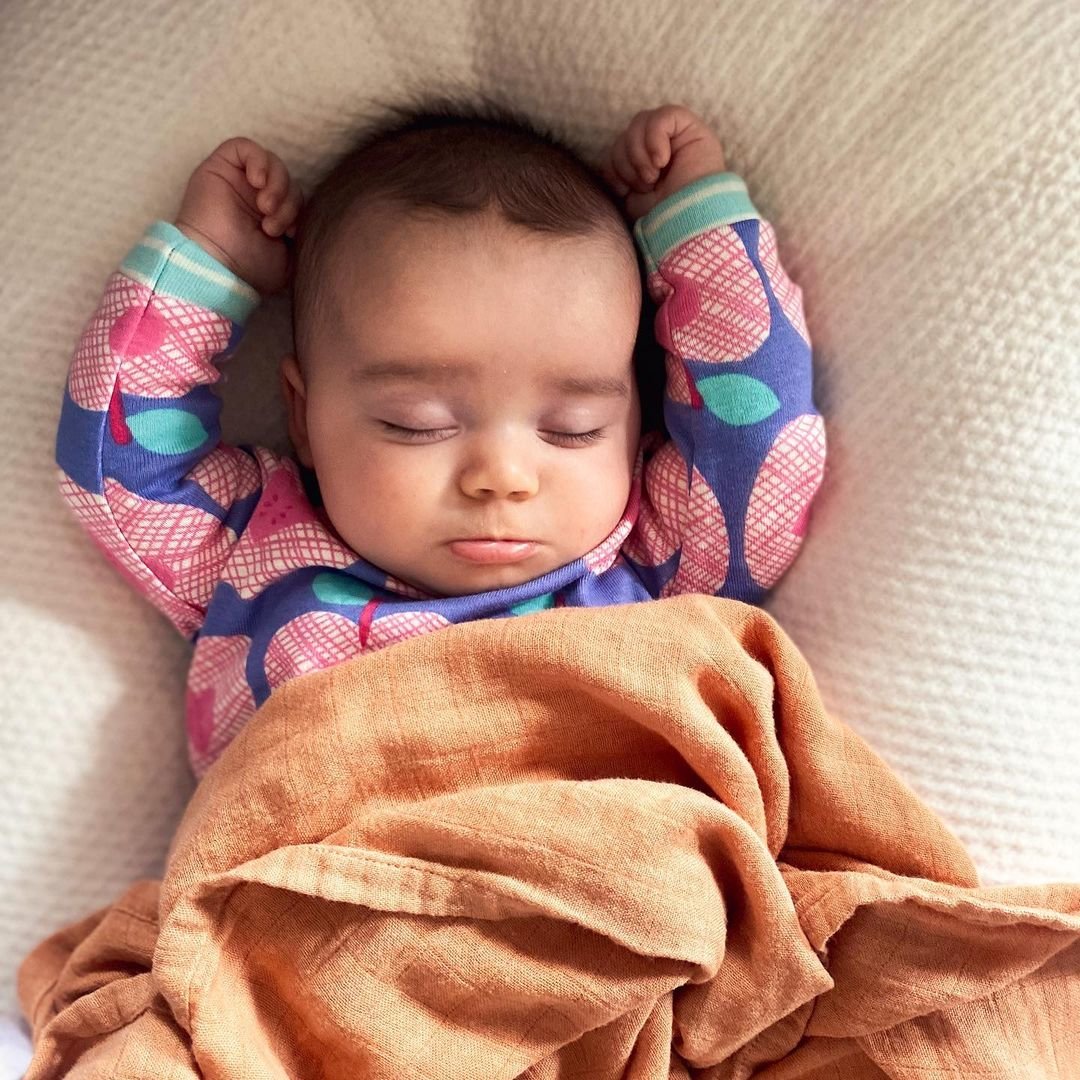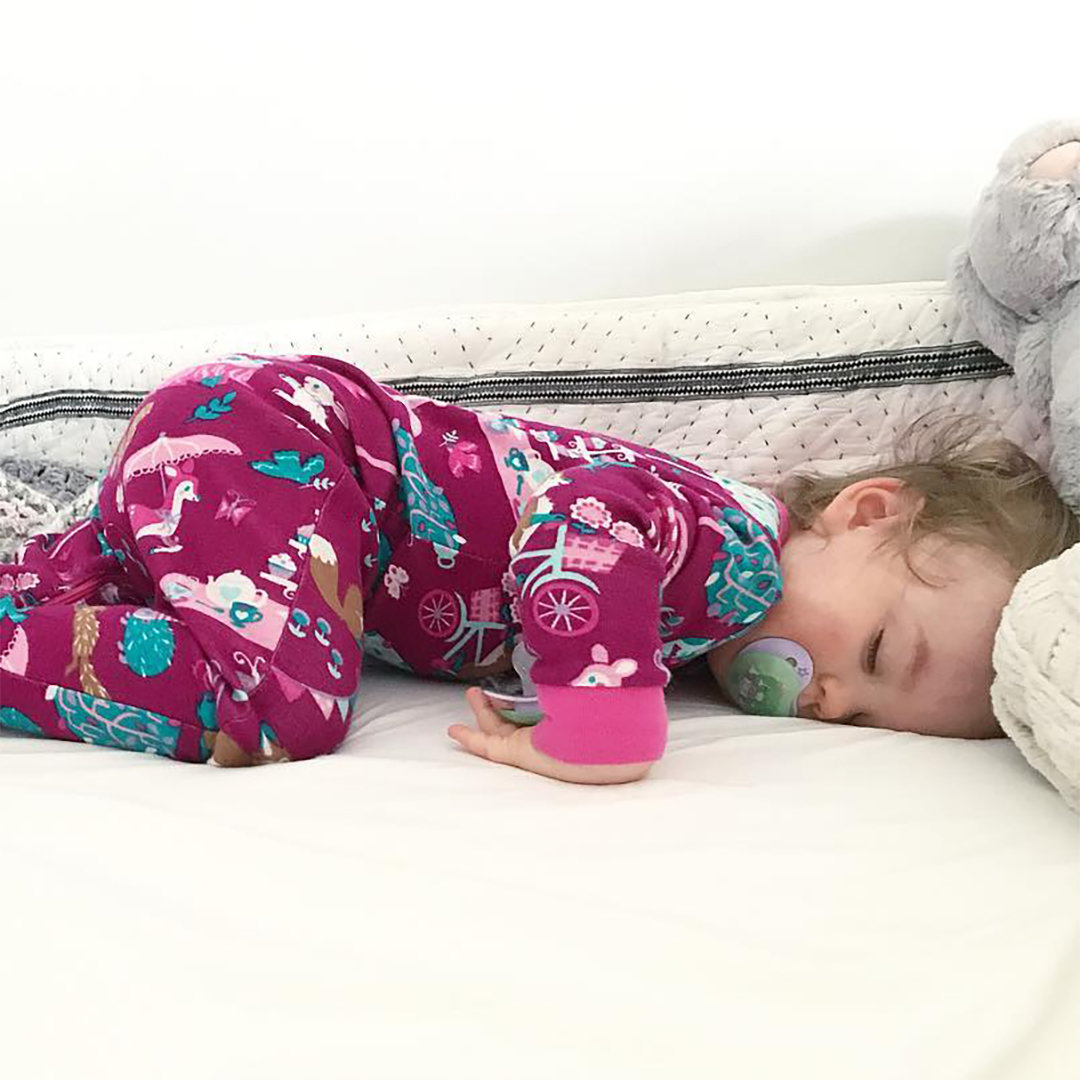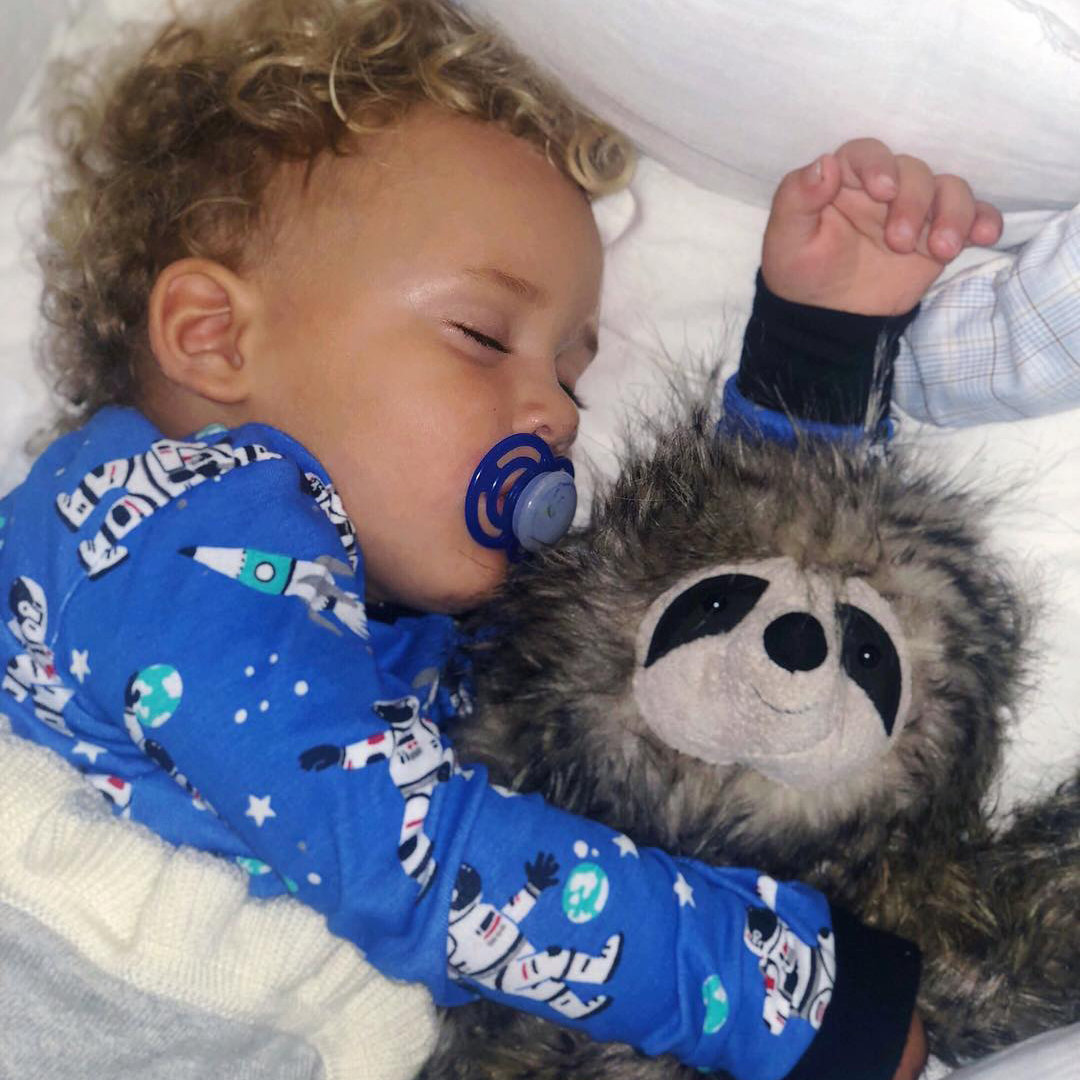The Village - How to nail an age appropriate sleep schedule with your child

LEARN — SLEEP TRAINING PART 2
How to nail an age-appropriate sleep schedule with your kids
by Rosalee Lahaie Hera
Once you’ve created a perfectly sleep-conducive environment for your child, you will want to take a deep dive into their schedule to ensure that it is age appropriate. The best sleep schedules are the ones that maximize sleep throughout your kiddo’s entire 24-hour day.
This is because the road to more sleep is… more sleep.
If your kiddos are regularly well rested, they’re more likely to regularly sleep well too.
Sound mystifying? It really doesn’t have to be. You can’t go wrong if you focus on age-appropriate wake windows and a proper bedtime based on how many hours of total sleep your little one should enjoy in a 24-hour period.
Between the ages of 0 to 2 years old, pay close attention to age-appropriate wake windows. Wake windows are the amounts of time that little ones can spend awake before becoming overtired and getting a shot of the stress hormone, cortisol. This can make it difficult for little ones to fall and stay asleep.
"Caregivers can be easily led astray by so-called “sleepy cues”, e.g. rubbing eyes, yawning, listless, red-rimmed eyes. However, we know that many children exhibit these cues when they are already overtired, meaning that we have unfortunately already missed the ideal window for sleep."
Wake windows are 45-60 minutes when a little one is born, and they increase by about 10-15 minutes per month until they can handle approximately 3-4 hours by their first birthday. While a 6-month-old can handle only about 2-2.5 hours of being awake in one stretch, a 2-year-old can handle about 6 hours of being awake in one stretch. Getting them to sleep before these windows close is the key to quick and easy naps and bedtimes.
Caregivers can be easily led astray by so-called “sleepy cues”, e.g. rubbing eyes, yawning, listless, red-rimmed eyes. However, we know that many children exhibit these cues when they are already overtired, meaning that we have unfortunately already missed the ideal window for sleep. Other children never really develop reliable sleepy cues, or they will “cue” for some other reason, e.g. when they are hungry or bored.
Beyond the baby and early toddler phase, it’s important to set a consistent bedtime each and every night and stick with it. It’s also important to ensure your kiddos are getting adequate amounts of sleep in a 24-hour period. If you ‘work backwards’ to ensure they are getting the proper amount of sleep overnight, you will arrive at the appropriate bedtime for your little one.
Babies 3-12 months old need 14-18 hours per day, toddlers 1-3 years old need 12-14 hours per day, preschoolers 3-5 years old need 11-13 hours per day, and school aged children 6-12 years old need 10-11 hours per day. The younger they are, the more sleep they need.
A great bedtime to aim for is 6:30-8:30 p.m. for babies, toddlers, preschoolers and most school-aged children. Again, the younger they are, the earlier the bedtime they will need (in general). One of the exceptions to this is during a baby’s first few weeks of life. At this time, they will have naturally later bedtimes, 9-11 p.m.
Armed with a perfectly sleep-conducive environment and an age-appropriate sleep schedule, next you will want to apply a consistent bedtime routine and encourage your little one to fall asleep independently.
Rosalee Lahaie Hera is a Certified Pediatric & Newborn Sleep Consultant, a Certified Potty Training Consultant, and the founder of Baby Sleep Love. She’s also a mom to two beautiful little humans. Rosalee is a researcher at heart with a background in healthcare management and a passion for sleep science. She takes a highly analytical approach and uses proven, gentle methods to help families (like yours!) get the sleep they need. Rosalee is a big fan of fancy coffee and great food (both cooking it and eating it). You can connect with Rosalee on Facebook or Instagram.
LEARN — SLEEP TRAINING PART 2
How to nail an age-appropriate sleep schedule with your kids
by Rosalee Lahaie Hera
Once you’ve created a perfectly sleep-conducive environment for your child, you will want to take a deep dive into their schedule to ensure that it is age appropriate. The best sleep schedules are the ones that maximize sleep throughout your kiddo’s entire 24-hour day.
This is because the road to more sleep is… more sleep.
If your kiddos are regularly well rested, they’re more likely to regularly sleep well too.
Sound mystifying? It really doesn’t have to be. You can’t go wrong if you focus on age-appropriate wake windows and a proper bedtime based on how many hours of total sleep your little one should enjoy in a 24-hour period.
Between the ages of 0 to 2 years old, pay close attention to age-appropriate wake windows. Wake windows are the amounts of time that little ones can spend awake before becoming overtired and getting a shot of the stress hormone, cortisol. This can make it difficult for little ones to fall and stay asleep.
"Caregivers can be easily led astray by so-called “sleepy cues”, e.g. rubbing eyes, yawning, listless, red-rimmed eyes. However, we know that many children exhibit these cues when they are already overtired, meaning that we have unfortunately already missed the ideal window for sleep."
Wake windows are 45-60 minutes when a little one is born, and they increase by about 10-15 minutes per month until they can handle approximately 3-4 hours by their first birthday. While a 6-month-old can handle only about 2-2.5 hours of being awake in one stretch, a 2-year-old can handle about 6 hours of being awake in one stretch. Getting them to sleep before these windows close is the key to quick and easy naps and bedtimes.
Caregivers can be easily led astray by so-called “sleepy cues”, e.g. rubbing eyes, yawning, listless, red-rimmed eyes. However, we know that many children exhibit these cues when they are already overtired, meaning that we have unfortunately already missed the ideal window for sleep. Other children never really develop reliable sleepy cues, or they will “cue” for some other reason, e.g. when they are hungry or bored.
Beyond the baby and early toddler phase, it’s important to set a consistent bedtime each and every night and stick with it. It’s also important to ensure your kiddos are getting adequate amounts of sleep in a 24-hour period. If you ‘work backwards’ to ensure they are getting the proper amount of sleep overnight, you will arrive at the appropriate bedtime for your little one."
Babies 3-12 months old need 14-18 hours per day, toddlers 1-3 years old need 12-14 hours per day, preschoolers 3-5 years old need 11-13 hours per day, and school aged children 6-12 years old need 10-11 hours per day. The younger they are, the more sleep they need.
A great bedtime to aim for is 6:30-8:30 p.m. for babies, toddlers, preschoolers and most school-aged children. Again, the younger they are, the earlier the bedtime they will need (in general). One of the exceptions to this is during a baby’s first few weeks of life. At this time, they will have naturally later bedtimes, 9-11 p.m.
Armed with a perfectly sleep-conducive environment and an age-appropriate sleep schedule, next you will want to apply a consistent bedtime routine and encourage your little one to fall asleep independently.
Rosalee Lahaie Hera is a Certified Pediatric & Newborn Sleep Consultant, a Certified Potty Training Consultant, and the founder of Baby Sleep Love. She’s also a mom to two beautiful little humans. Rosalee is a researcher at heart with a background in healthcare management and a passion for sleep science. She takes a highly analytical approach and uses proven, gentle methods to help families (like yours!) get the sleep they need. Rosalee is a big fan of fancy coffee and great food (both cooking it and eating it). You can connect with Rosalee on Facebook or Instagram.
#HatleySleep
How do you get the little one to sleep? Share your bedtime routine with us
Join us on instagram


